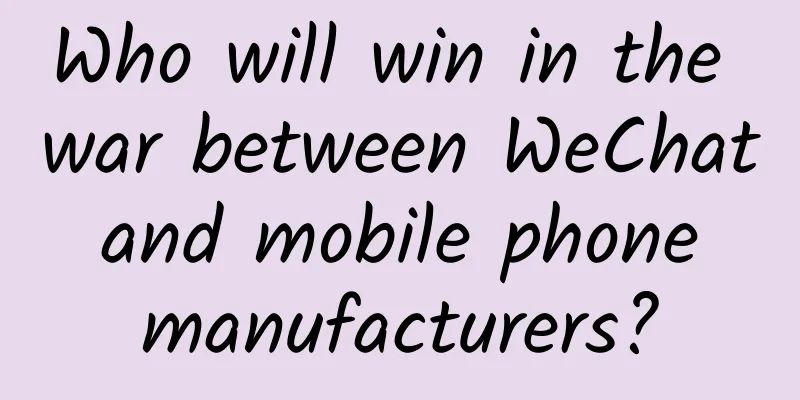Blockchain mobile phone is still a false proposition after all

|
As blockchain technology becomes more popular, some manufacturers (including mobile phone and non-mobile phone manufacturers) have recently released so-called blockchain phones that claim to use blockchain technology, which has caused heated debate in the industry. So is the blockchain phone a real thing, or is it a gimmick promoted by manufacturers for commercial purposes? Here, we can first look at the background of several manufacturers that have launched blockchain phones (at least claiming to use blockchain-related technologies) that are currently known through media reports. Foreign manufacturers include India's VVDN, Israel's Sirin Labs and Finland's Zipper Global; domestic manufacturers include Tangguo, Changhong and Lenovo. Their commonality is that they have been marginalized in the current smartphone industry and market, and some are not even smartphone manufacturers. It is not difficult to see that the primary purpose of these companies launching blockchain phones is to change their competitive position in the smartphone industry. Non-mainstream companies hope to enter the mainstream, and non-mobile phone manufacturers hope to open the door to the smartphone industry. After all, smartphones will still be the most mainstream mobile devices and traffic portals in the future. Next, let’s look at how these companies use blockchain technology. From the perspective of foreign companies, they basically want to build an independent blockchain mobile phone ecosystem, from operating systems to applications, and even build their own app stores. The most typical example is Zipper Global. The reason why Zipper Global has such ambitions has a lot to do with its background. According to a report by the well-known technology website TechCrunch, the Zipper technical team came from the core team of Nokia's Symbian MeeGo system. After Nokia switched to Microsoft, the Zipper team created Jolla, a company that upholds the Nokia spirit, and successfully developed Sailfish OS, the world's only mobile operating system independent of Android and Apple iOS, based on MeeGo in 5 years. In fact, what we want to say here is that successfully developing a smartphone operating system is one thing, and being adopted by partners (OEM manufacturers who pre-install the system), the market, and users is another. It is a well-known fact that the current smartphone ecosystem is dominated by Apple iOS and Google Android, which almost occupy 100% of the market share. So under this circumstance, how big a chance does Zipper have? It should be noted that the so-called blockchain operating system launched this time is different from the previous Sailfish OS in that this system is compatible with Android (that is, it can run Android applications), but it uses a dual operating system that is isolated from Android. Let’s not talk about how the blockchain operating system developed by Zipper itself is and how it obviously lacks confidence compared with the previous independent Sailfish OS. As far as the dual system is concerned, it has already caused confusion in the market performance of mobile phones that use the system pre-installed in the future. That is, did the market and users choose blockchain phones because of Android, or because of the blockchain system itself? Don’t underestimate the difference between the primary and the secondary. From a marketing perspective, it is easy to confuse and bring a certain market publicity effect to Zipper. But then again, if users ultimately choose Android phones and use the Android ecosystem more, then the blockchain mobile phone ecosystem created by Zipper will sooner or later be finished. The reason is simple. Without more users using the blockchain ecosystem (applications), it means that the most important developers in the blockchain ecosystem will have no confidence and motivation to develop blockchain applications. Without the continuous support of developers, what will be the result of the ecosystem? This has been fully demonstrated in the previous smart phone ecosystem wars, such as the fall and failure of Nokia's Symbian, Blackberry's Blackberry OS, Palm's Web OS, and Microsoft's WP. In addition, judging from the partners that have been announced so far, such as Sony, INTEX, one of the largest mobile phone manufacturers in India, and Mi-Fone, a leading mobile phone company in Africa, they are basically non-mainstream mobile phone companies and markets that have been marginalized and have lost competitiveness in the global smart phone market. If foreign companies start with the ecosystem itself in blockchain mobile phones, which seems high-end (from a marketing perspective), domestic mobile phone manufacturers are almost all based on the application level, such as mining and payment security, which are well known to the Chinese people. Not to mention that from a marketing perspective, domestic manufacturers appear to be very low compared to foreign manufacturers. When it comes to the application level itself, which allows the market and users to better understand and then raise questions, it further exposes the self-defeating nature of these manufacturers. Take Tangguo and Changhong, which launched blockchain phones, for example. One of their biggest selling points is using mobile phones for mining (mobile phones as mining machines). It sounds like a well-known application of blockchain technology and it is easy to attract users' attention, but with a little scrutiny, it is simply a low-level gimmick. Because the number of bitcoins is limited, mining nowadays is basically a competition of hardware computing power. From the perspective of computing power chips, it has evolved from GPUs in 2010 to FPGAs at the end of 2011, and then to ASIC chips currently used mainly for SHA-256 (or other algorithms) calculations. What is the reason? There is a vivid analogy in the industry. If the mining speed of the CPU is 1, then the GPU is about 10. Although the speed of the FPGA mining machine is only 8, the power consumption is 40 times less than that of the GPU, and the mining speed of the ASIC is 2000, and the power consumption is equivalent to that of the GPU. This is why the ASIC chip quickly drove the other three types of mining machines out of the market as soon as it came out. Nowadays, a mainstream ASIC chip mining machine, such as the Antminer S9, sells for more than 10,000 yuan. At this time, if you want to mine Bitcoin, you have to run at least hundreds of S9s day and night. See how much computing power is needed to "mine" the coin? How can a small mobile phone generate and bear such a large computing power? In addition to exacerbating the loss of mobile phone components and letting users change their phones as soon as possible, what other purpose is there? However, the Candy Phone is very straightforward. It mainly “mines” your own Candy Points, and the mined Candy Points can be exchanged for designated goods and services in Candy physical stores and application markets, such as the next generation of Candy blockchain phones, mobile phone protective cases, Candy paid apps, after-sales services, and endorsement fan meeting tickets. Isn’t this typical self-marketing (which is the same as traditional marketing) and self-entertainment? It should be noted that Candy, which has always been positioned as a thousand-yuan phone, even launched a 999-yuan full-screen phone when the full-screen just emerged. Because of the addition of the name of blockchain, the price of the phone suddenly jumped to 3999 yuan. What does this mean? Is it "robbing" users' wallets in the name of blockchain? Let's look at the so-called world's first blockchain phone S5 released by Lenovo not long ago, which focuses on security. We don't know whether Lenovo did the basic "homework" when claiming that the S5 it released was the world's first blockchain phone. Let's not talk about the foreign companies mentioned above that announced the launch of blockchain phones as early as last year (at least in name). Even for domestic companies, Tangguo and Changhong launched blockchain phones earlier than themselves. Are they too lazy to do the basic homework of creating a "gimmick"? Let's talk about the so-called security. Which mobile phone company and which mobile phone in the smartphone industry and market can sell well with the selling point of security? We only know that the BlackBerry phone, which once focused on security and was recognized by the market and users, died. Since then, few mobile phones with security as a selling point have been able to become mainstream mobile phone companies. Of course, we are not saying that the security of mobile phones is not important. On the contrary, it should be very important. Because of this, security should be the most basic requirement for mobile phone manufacturers and products. However, based on the understanding that there is no most secure, only safer, for the market and users, if nothing goes wrong, everyone's mobile phone is safe, and if something goes wrong, everyone's mobile phone is unsafe, which makes the so-called security unable to form an absolutely obvious differentiated competitive advantage in the market and among users. Moreover, Lenovo has not used facts, and it is impossible to use facts to prove that its blockchain mobile phone S5 is safer than the mobile phones of its competitors that do not use blockchain technology. To sum up, we believe that whether it is a blockchain phone that is determined to build a blockchain ecosystem abroad or a blockchain phone that is only launched at the application level in China, there is a suspicion that they are misleading the market and users. However, since it is called a blockchain phone or adopts certain blockchain technologies and functions, then it is each user's choice to believe it or not. However, we still recommend that when purchasing a so-called blockchain phone, you should still measure it by the standards, experience and value of Android phones. At least when users find that the so-called blockchain phone is just an unreliable gimmick during use, they will not have paid a lot of money for it. |
<<: 8 Best Android Password Managers for Better Security in 2018
>>: What do you think? Cook: A large part of the iPhone is produced in the United States
Recommend
What is the viral user growth model? How to build a user growth model?
The concept of growth hacking is very popular now...
Apple to launch new iPhone SE: Price in China starts at 2,999 yuan, with target of 30 million units shipped
Apple is ready to release the new iPhone SE, whic...
How to learn dubbing? Dubbing training video tutorial, teach you to learn dubbing from scratch
How to learn dubbing? Dubbing training video tuto...
Are you not clear about the event promotion planning process? Come in quickly!
1. Ideas for event promotion planning 1. Five ele...
Can WeChat help Weishi, a "fool", to rise up?
Tencent is currently testing a feature that allow...
Advanced Copywriting Guide | How to be a good copywriter?
Copywriting is not about creating words and sente...
Things you should pay attention to when renting a server hosting provider
1. The "U" of a server is a unit that r...
DaVinci Resolve Online Color Grading Course
DaVinci Resolve Online Color Grading Course 1 Ima...
AI is taking programmers' jobs: AI may replace programmers in 2040
Some experts at Oak Ridge National Laboratory in ...
2021 Jiebao linkage system course "Leopard Brother Short-term Practical System Course" and "Jiebao Trading System Advanced Edition" video + handouts
2021 Jiebao linkage system course "Leopard B...
How do I migrate a WeChat mini program to a Baidu mini program?
Q: How do I migrate a WeChat mini program to a Ba...
Xiaohongshu Promotion Method | Is the Grass-Planting List Still Reliable?
A few days ago, Xiaohongshu released a "Litt...
Price inquiry for development of digital mini program in Bazhong. How much does it cost to develop digital mini program in Bazhong?
How much does it cost to develop a digital mini p...
The secrets of the No.1 public and private domain traffic gameplay in the category revealed!
In the era of inventory, merchant brands should t...
How to increase popularity of Douyin live streaming? How did the Douyin live broadcast room become so popular?
How should we operate in the early stage of selli...









